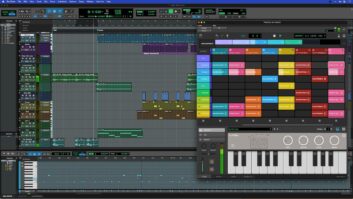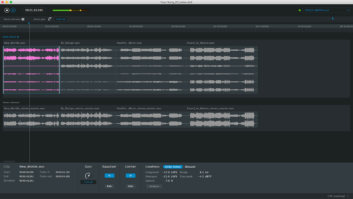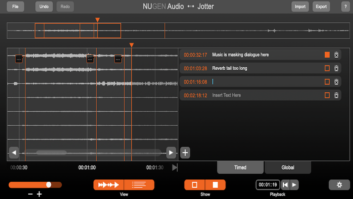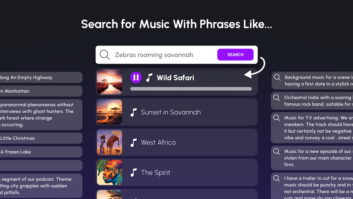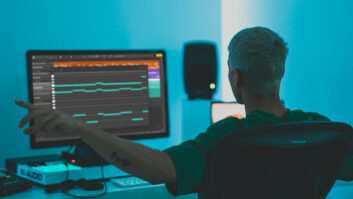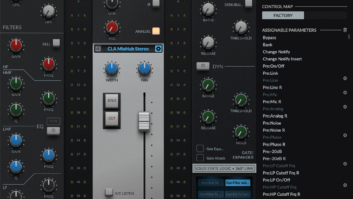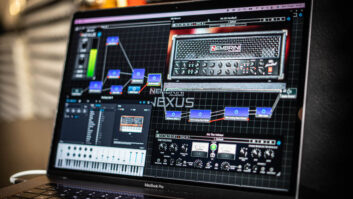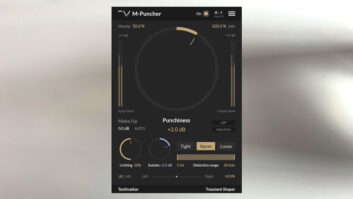If there’s any act within the current strata of hard rock bands that no one has the guts or ability to rip off, it would have to be Tool. The band, which consists of Adam Jones (guitar), Justin Chancellor (bass), Maynard James Keenan (vocals) and Danny Carey (drums), burst onto the scene in late ’93 and redefined the concept of music-for-art’s-sake with their debut releaseUndertowand the surprise MTV mainstay “Sober.” Several successful festival and headlining tours followed, and in ’96, the band released the critical and commercial successÆnima, which they toured behind for more than two years. After that tour, lead singer Keenan spent the better part of the next year fronting the wildly successful band A Perfect Circle, the studio project of one-time guitar tech Billy Howerdell.
Once Keenan’s commitments with APC ended, Tool recorded and released their third and most successful full-length release, Lateralus, in the spring of 2001. The new album not only maintained the band’s reputation for epic compositions, bizarre time signatures and apocalyptic imagery, but also found the band exploring new sounds, textures and instruments.
Last summer, Tool took to the road for the first time in more than four years, playing dates in Europe and committing to an extensive U.S. outing. The first half of the U.S. tour focused on a more intimate performance and only hit large theaters in major cities. The second leg, however, was an all-out arena juggernaut, selling out 40,000-plus venues across the country. Support acts included King Crimson and Tricky, and, on occasion, members of each band were brought onstage during Tool’s set to play percussion or keyboards. Mix got a chance to see the band at the Shoreline Amphitheater in Mountain View, Calif. As had been the case at a number of outdoor venues, Tool’s November show marked the end of the 2001 concert season at Shoreline.
CALCULATE WHAT YOU WILL
Tool is renowned for grinding, abrasive, multimedia-enhanced live shows, and this most recent outing raised the bar even higher. In addition to a state-of-the-art lighting rig, two projection screens and a huge flat-panel display were used as the main backdrop. The video elements were culled from the band’s numerous stop-action videos in addition to some new computer-generated elements. The different components were mixed live each night, providing a totally new and unique visual collage for each song.
The band’s stage positions were also somewhat unconventional; Keenan actually stood behind the backline, on a raised platform, in front of the flat-panel display. The reason for this was actually a practical one. Tool’s legendary stage volume, and in particular Carey’s drum kit, have always caused problems with Keenan’s vocal mic. Consequently, Jones and Chancellor stood at the front of the stage, and Carey was positioned on a second riser. This setup kept bleed to an absolute minimum while preserving the volume and fidelity that the band requires.
FORTY-SIX AND 2
Monitor engineer Chris Gilpin, now a veteran of tours with both Tool and A Perfect Circle, was well-acquainted with the specific needs of each bandmember. For singer Keenan, who had used in-ear monitors (IEMs) on previous tours with both Tool and APC, Gilpin provided an IEM setup including Ultimate Ears UE5 custom molds and a Shure PSM700 wireless system. The other three bandmembers relied on an array of Showco Prism wedges, plus the sound of the backline equipment.
“The other guys talked about trying in-ears,” Gilpin explains. “But to be honest, I can’t really imagine a situation where they would be happy. And it’s certainly not a criticism of anyone, but they are audio purists, and they definitely want it to sound a certain way. It’s been a long road to get it to the point where they can say, ‘Yes, that’s the way I want it to sound.’ It was a constant battle [through Europe] up until the point I stepped up to floor wedges and gave them all the headroom they needed.”
Gilpin managed each bandmember’s custom mix on a 48-input ATI Paragon. “The reason I like the ATI is that it’s got gated comps on every channel,” says Gilpin. “It’s a very clean-sounding board. And I’d go with either this or a Midas just for the audio quality. It’s clean and it’s crisp, and it works well for in-ears. It’s got a fantastic number of inputs and outputs as well, which is very useful.”
The main vocal mic was an Audix OM-6. The bass and guitar rigs were miked with a combination of Shure SM57s and Sennheiser 409s, which provided some variety in the sounds and the ability to mix between the differing cabinets. The miking scheme for the drum kit comprised SM57s on snare and rack toms, AKG 414s on overheads, an AKG 460 on the ride cymbal, four RE-20s (two on floor toms and two within the kick drums) and two SM91s also on the kick drums.
Other stage inputs include four stereo pairs for the various synth/sampler rigs. Keenan’s guitar, which he played on a handful of songs, was taken DI.
Gilpin routed the main vocal channel through an SPX 990 for chorus and a PCM70 for a short reverb. An SPX 990 was also used on bass. Gilpin notes that the majority of the effects were used solely for Keenan’s IEMs.
“The biggest challenge on this [tour] is the fact that the stage is one of the loudest that I’ve ever been involved in,” says Gilpin. “And I’ve done a few metal acts before, although these guys aren’t really metal. On the one side, I’m having to turn everything up to the point where the guys are feeling it as well as hearing it. So there is definitely a threshold where it has to be that loud. And, at the same time, I’m trying to separate that from Maynard’s vocal mic, because there is no way that anyone is going to put out as much as a Marshall four-by-twelve with their voice. And, thankfully, they arranged it before I got involved, where Maynard was going to be on a riser, behind the backline, which actually keeps him in a very quiet pocket.”
NO SECOND GUESSING
Where the stage engineers were confronted with high SPLs, a complicated monitoring scheme and a technically taxing show, a stripped down, “balls-to-the-wall” attitude set the tone at FOH. Hard panning of the drums, pitch correction and unnecessary outboard effects were purposely avoided. The idea was to color as little of the band’s sound as possible and simply present an accurate approximation of the band’s recorded material. For this leg of the tour, the main P.A. was a Showco Prism system, and FOH engineer Nobby, a veteran of tours with Bush and Rage Against the Machine, opted to use a Midas XL4 console, running 56 inputs. “The XL4 is just the best-sounding board; it’s my personal choice,” says Nobby.
Nobby’s outboard processing devices included two Summit TLA-100s and two BSS 901s, one of each patched across vocal and bass channels. Dynamic control of two guitar and two keyboard/sampler subgroups was managed by four dbx 160s, while Drawmer DS 201 gates were used on all the drum inputs except for the snare. Other items of note included two TC 2290s, an SPX 990, a REV 5, a KT DN360, an Eventide H3000 and four dbx 160As.
“It’s kind of like a punk show, actually,” Nobby explains. “We’ve moved some things around. We tried some valve processors in places. But for me, it was too warm. I was trying to keep the edge. So I actually swapped a few things out and put some dbx 160 compressors on there. And I’m [sure some people] wondered why I was swapping TLA and all this valve stuff for the dbx’s. I think, if you’re in the studio, they sound great. But I just wanted to keep it simple. There are some basic delays on the vocal and bit of modulation and Harmonizers and some distortion effects.
“I want to make it sound as close to the CD as possible,” Nobby concludes. “Whenever I meet a band and start working with them, I always say, ‘Look, are you happy with your CD?’ Some people think that’s a funny question, but a lot of bands say, ‘Well, when we were finally finished, we wished that this or that was louder.’ But when you get a band that loves their CD, that’s perfect. I just listen to it for a few weeks before. And I go back and listen every couple of weeks because you can start to veer, and you just have to keep yourself in check.”
Robert Hanson is an assistant editor at Mix.
